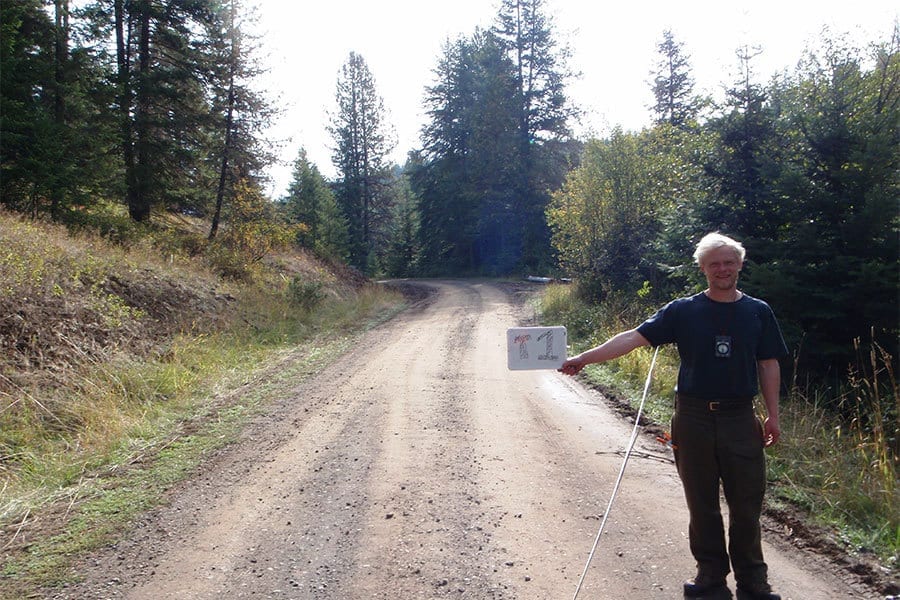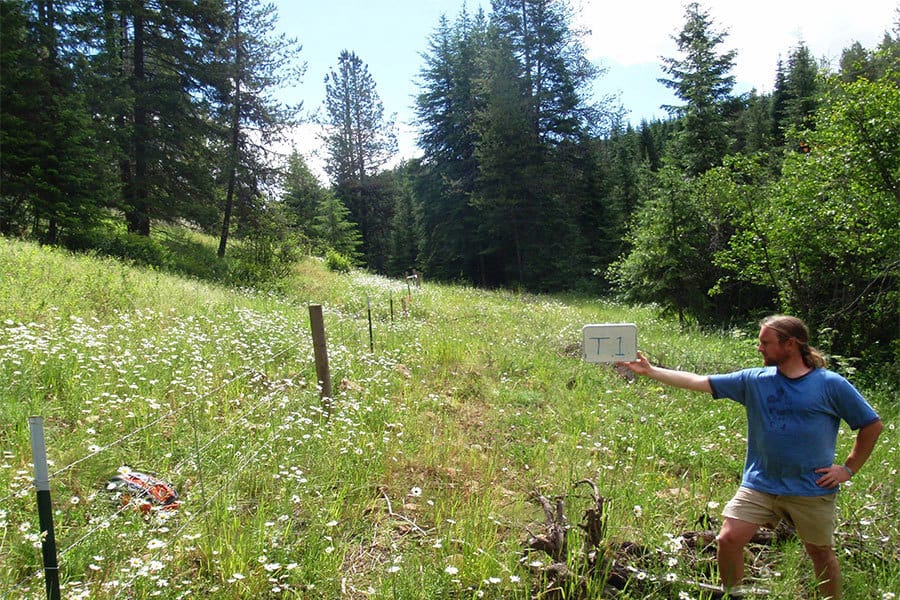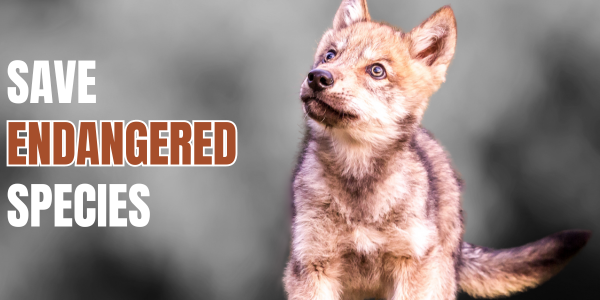Photo Credit: Bartfett
Rewilding – healthy, connected wild places and waters for wildlife and people
Rewild Lands and Waters
The grizzly bears, lynx, wolves, Chinook salmon, bull trout, and jumping mice that Guardians works hard to protect also need healthy homes to live and prosper. That means rivers should be clean, cold, and connected. Lands should have abundant food, places to hide, and connected areas to roam unharrassed. But over a century of greed due to extraction activities and road building has left fractured lands, waters, and lives in its wake.
Guardians works to erase the scars from misuse of national forest lands and to rewild the lands and waters. We work on policy—nationally, regionally, and locally—to keep restoration on the agenda. We work in our forests, reviewing hundreds of pages of project proposals and drafting comments and objections. We work with many allies, elevating their efforts and ours. We work in the courts, defending the rights of bull trout to swim in streams not clogged with sediment. And we work with Congress, opposing bad bills and supporting restoration funding for public lands. Our vision is of healthy, connected wild places and waters for wildlife and people.
Forest Roads: Key for Rewilding
For decades, the logging and mining interests that ran unchecked across national forests built roads everywhere. Today more than 370,000 miles of forest roads crisscross these lands—far more miles than can be maintained or that are needed to access trails and campsites. Roads send sediment cascading into rivers and streams, smothering native fish and polluting drinking water. Roads split apart wildlife habitat and waterways, create barriers to migration, and invite invasive species. We focus on forest roads because of the damage they cause, but also because the solution is simple: maintain the roads we need and remove the ones we don’t. This leads to reconnected habitat, restored waterways, and rewilded national forests.


Before and after rewilding on the Clearwater National Forest.
What We’re Doing
We advocate nationally, regionally, and locally to restore wild places and waters by returning unneeded roads to the wild, maintaining and repairing needed roads for recreational access, and restoring fish passage where roads block migration. We advocate for a minimum road system—one that minimizes ecological impacts, maintains key access needs, and is financially sustainable.
We defend the rights of threatened species such as bull trout, salmon, and steelhead to thrive in healthy rivers and streams. Native fish need access to cold, clear headwater streams to survive. But when forest roads add too much sediment to streams or when large dams block fish from migrating up and down streams, we go to court.
We educate and lobby Congress to ensure funds are available to heal lands and waters through the Legacy Roads and Trails program. Since the program was established in 2008, the Forest Service has fixed and/or storm-proofed 18,057 miles of roads for access; reclaimed 7,053 miles of roads for the wild; replaced 1,030 culverts to open up fish habitat; created hundreds of local jobs; and saved $3.5 million per year in reduced annual road maintenance costs.
We recognize that all of our voices are lifted and louder when we work with others. Guardians leads or is active in coalitions such as the Washington Watershed Restoration Initiative, Drinking Water Providers Partnership, Oregon Stream Protection coalition, and with allies such as The Wilderness Society, Winter Wildlands, and many, many more.
WildEarth Guardians continually develops and shares information widely. We also continue to preserve the vast library of resources from Wildlands CPR in our bibliographic database.
- A Dilapidated Web of Roads (2021): The Forest Service’s Departure From a “Sustainable” Forest Road System: This white paper provides an overview of the 2001 Roads Rule, explains its disjointed implementation, discusses relevant case law, and concludes with a list of recommendations for achieving a sustainable forest road system.
- National Forest Roads and Habitat (DIS)-Connectivity (2020): An overview of impacts and options for mending connections.
- Wildfire and Forest Roads fact sheet (2020): Forest roads can increase wildfire risks, affect fire behavior and cause serious ecological impacts after the fires are out. This fact sheet provides a quick summary of key points.
- The Forest Service & Categorical Exclusions: Misuse, Obfuscation Reveal a Clear Need for Changes (2020): This report provides a snapshot of how the Forest Service misused certain Categorical Exclusions during the first three months of 2020 to propose logging, burning and other actions across more than 3.7 million acres.
- Climate Change and National Forest Infrastructure (2020): An abbreviated summary of the impacts from climate change related to transportation infrastructure, as well as recommendations for adaptation to increase resiliency.
- The Environmental Consequences of Forest Roads and Achieving a Sustainable Road System (2020): The U.S. Forest Service faces many challenges with its vastly oversized, under-maintained, and unaffordable 370,000 mile road system. This updated and expanded report captures the evolving science.
- Mile by Mile – Ten Years of Legacy Roads and Trails (2018): A report summarizing how the U.S. Forest Service’s Legacy Roads and Trails program has successfully addressed some of the challenges related to their road system. The report includes 10 years of accomplishments, case studies, and an appendix with detailed data.
- Reductions in Road Sediment Production and Road-stream Connectivity From Two Decommissioning Treatments (April 2017): This study looked at forest roads in the Colorado Front Range to assess sediment and road/stream connectivity before and after two kinds of treatment. Results showed sediment production dropping to nearly zero and stream connectivity reduced from 12% to 2%. The ripping plus mulching treatment had slightly better results.
- USFS – National Forest System Statistics (Fiscal Year 2016): A U.S. Forest Service annual two-page publication summarizing: acres of national forest lands, number of bridges, miles of system roads and trails, number of buildings, dams, recreation sites and drinking water/wastewater systems, as well as deferred maintenance needs.
- Quantifying the Role of National Forest System Lands in Providing Surface Drinking Water Supply for the Southern United States (September 2014): This report concluded in the 13 southern states there are 1,541 drinking water intakes serving 19 million people that receive some water from National Forest lands. The authors also calculate the contribution from state/private forest lands and conclude that southern forests are very important in providing clean and reliable drinking water to communities.
- Transportation Infrastructure and Access on National Forests and Grasslands, A Literature Review (May 2014): This report summarizes conclusions from published literature with respect to forest road impacts to aquatics and wildlife.
- Restoration in Action: The First Five Years of the Legacy Roads and Trails Program (2013): A report summarizing the progress made during the first five years of the U.S. Forest Service’s Legacy Roads and Trails program. Data, photos, and case studies are also included.
- Wildlands CPR: A Retrospective (2013): An overview of the achievements made by Wildlands CPR over 20 years using the tools of policy, science, litigation and strategic partnerships. Wildlands CPR merged with WildEarth Guardians on July 1, 2013.
- Road Reclamation: Measuring Success (2012): Documents how successful road reclamation is at reducing stream sedimentation based on a multi-year field study program implemented by the U.S. Forest Service Rocky Mountain Research Station.
- USFWS Biological Effects of Sediment on Bull Trout (2010): A literature review shows that sediment direct effects on bull trout include: gill trauma and impacts to spawning, redds, eggs, and alevins. Indirect effects include: impacts to macroinvertebrates, feeding efficiency, habitat, physiological stress, and behavioral changes. The report also includes a step-by-step process to determine sediment effects.
- Bibliography Database: Former Wildlands CPR’s repository of over 22,000 citations on roads and off-road vehicles. Last updated in May 2012.
